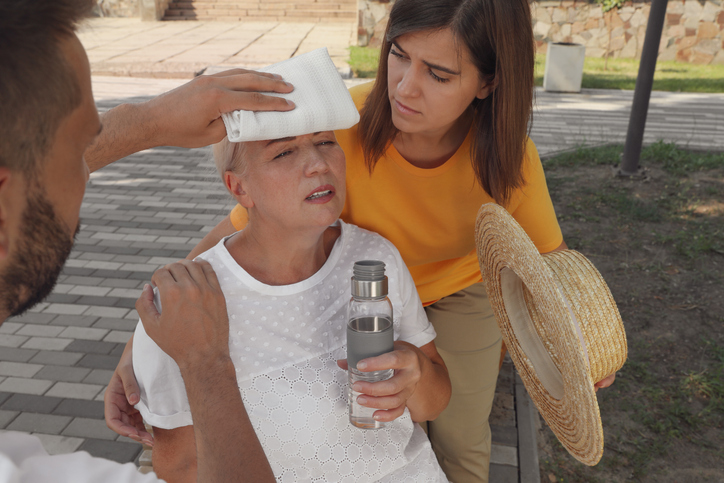Heat Stroke: Know The Signs
Posted by Total Pharmacy Supply on Jul 14th 2023

As pharmacists, you have a huge responsibility in helping your patients stay healthy and safe during the summer months. As temperatures rise, one of the most serious health risks people face is heat stroke — which can cause devastating damage if left untreated. Today we will be talking about what signs to look out for with heat stroke as well as how to treat it appropriately. With understanding these key signs, pharmacists are better prepared when caring for their patients who may be at risk of developing this severe condition.
What Is Heatstroke? What Causes It?
Heat stroke is a serious condition that occurs when the body overheats and is no longer able to regulate its temperature. It can be a life-threatening condition that requires immediate medical attention. Heat stroke is caused by prolonged exposure to high temperatures, particularly in conditions of high humidity or when the body is unable to cool itself through sweating. The symptoms of heat stroke can include a high body temperature, headache, dizziness, nausea, confusion, and even seizures. It is important to stay hydrated and limit time spent in high temperatures to prevent heat stroke. Understanding the causes and symptoms of heat stroke can help you stay cool and safe during hot weather conditions.
Symptoms of Heat Stroke to Look Out For
Some of the symptoms of heat stroke to look out for include a high body temperature, a rapid pulse, and hot, dry skin. Other signs may include confusion, dizziness, and nausea. It's essential to take action if you or someone you know is experiencing any of these symptoms. Heat stroke can be life-threatening, so it's best to seek medical attention right away.
Strategies for Prevention
Prevention strategies for heat stroke include:
- staying hydrated
- wearing light clothing and a hat
- seeking air-conditioned areas whenever possible
- avoiding strenuous outdoor activity during the hottest part of the day
It's also important to check on elderly friends or relatives who may be at risk due to age or underlying health conditions. By taking these steps to reduce your risk of developing heat stroke, you can enjoy your summer safely and comfortably.
How to Treat Heat Stroke
Heat stroke can be a serious and life-threatening condition that occurs when a person's body temperature rises rapidly. However, if you suspect that someone is experiencing heat stroke, there are various methods you can use to cool them down. For instance, you can apply ice packs or cold water to major blood vessels, such as the groin and neck. Additionally, you can fan the person or place them in a cool bath to help regulate their temperature. While these remedies may provide temporary relief, it is also important to seek immediate medical attention. Heat stroke can cause severe damage to the body's vital organs, so don't hesitate to call for emergency assistance. Remember, responding quickly to heat stroke is crucial for the person's well-being and survival.
Advice for Pharmacists on Keeping Patients Safe During Hot Weather Conditions
As the temperature rises, it's important for pharmacists to take extra precautions to keep their patients safe. Heat-related illnesses, like dehydration and heat stroke, can be dangerous and even life-threatening. To help prevent these conditions, pharmacists should advise patients on heat stroke prevention. Additionally, it's important for pharmacists to warn patients about the potential side effects of their medications in hot weather conditions, as some medications can increase the risk of heat-related illnesses. By being proactive and providing helpful advice, pharmacists can help keep their patients healthy and safe during hot weather conditions.
